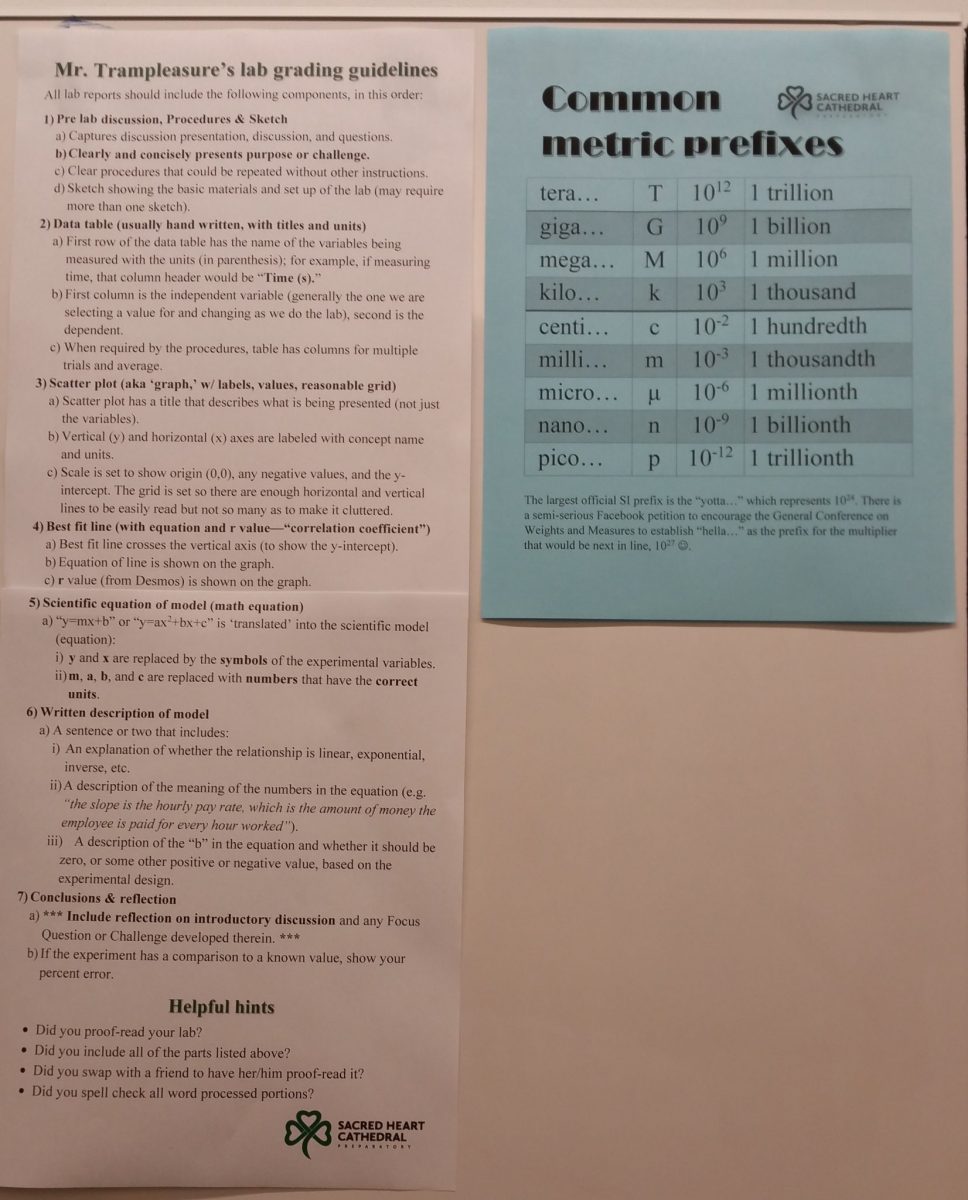180: Day 20: “One train leave a station at 2:30, and another train leaves…
Here’s a classic physics problem:

One train leaves a station at 2:30 at a speed of 40 m/s, and a second train leaves another station at 50 m/s. The stations are 40 km apart, and the trains are heading toward each other. At what time and position will the trains collide?
These days, many teachers use this as a chance for an actual experiment. I challenge my students to determine the speed of their cars, then I match them up with a random group (well I know each group has a car with a different speed). They then need to calculate the position the cars will collide if they start four meters apart. I have a grade sheet that shows them their grade. My standard sheet has A-D on it, with A at the center where the cars are due to collide.
With each buggies traveling 1.2-3.8 meters, I probably should give them a bit more slack in the “A” range, so I’m thinking that for next year I may use three sheets of paper with most of the center one being the “A”, and the outside ones being B-D.
I like this lab because it’s easy to get correct predictions, and students have to go back and check their math if they don’t get an “A”.
Here’s a video showing an accurate prediction. The class, and I, get quite excited as the collision moment approaches!






How did the students receive this experiment? Were they able to gain a deeper understanding of the physics problem? Was this given before the actual problem or after? What were you looking for after they ran the experiment?